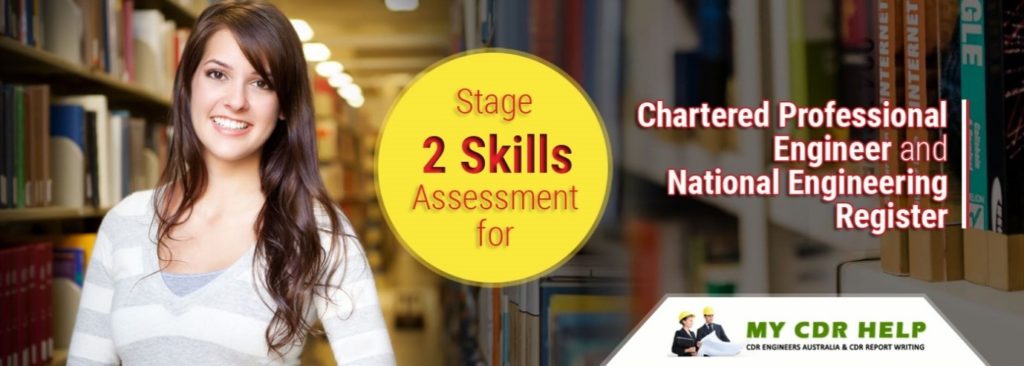What is Competency Standards Stage 2 for Chartered Professional Engineer 2
Attainment of Chartered Professional Engineer status under the Engineers Australia requires going through the assessment process of Competency Standards Stage 2. For attaining this certification for Professional Engineering, criteria of the Chartered status should be maintained. Chartered Professionals must possess years of experience and practice. They must also show their capabilities of attaining the highest level of professional competence.
Stage 2 Competency
Recognition of professional credential of business and the general public globally requires undergoing
Stage 2 Competency assessment for Chartered membership, as stipulated by the government. Maintenance of a constant level of competence in the requisite domain becomes an indispensable need in the case of candidates attaining the CPEng.
The ticket to Chartered membership of Engineers Australia (CEngT) is safeguarded by the Competency Standards Stage 2 assessments for CPEng for professional engineers. Registration with the National Engineering Register (NER) is also facilitated besides the aforementioned perks.
Leadership abilities, subject Expertise, Safety, and Quality needs to be the stronghold of a candidate, who is a certified Chartered Professional Engineer, alongside an appropriate demonstration of the same. There is a need to highlight the required levels of attitudes and values. They are also expected to show their performance abilities regarding engineering applications and other professional skills. The license to practice without supervision is facilitated by the EA under the above-mentioned criterion and the individual is certified as an independent and licensed professional engineer. Want to facilitate a lasting impression? Just ensure the providing of a professional intervention with documentation and your claims will be automatically boosted.
Expectations from a Professional Engineer
A continual process of demonstration of specific competence levels throughout the career in the chosen practice area is intrinsic for a Professional Engineers aspiring for CPEng. The appropriate handling and management of self in different scenarios and the ability to implement knowledge into practice are necessary traits for an individual here.
Expectations from Experienced Professional Engineers:
- A thorough understanding of stakeholder expectation and the explicit and implicit demands of the clients of a project (society involved)
- Engendering optimization of social, economic, and environmental outcomes throughout and post the full lifetime of concerned project/program
- Being able to show competence in a multitude of disciplines, professional domains, and people
- Providing appropriate Interpretation of technology-aided possibilities to business, society in general, and government
- There must be a consideration for both technical and non-technical aspects
- The candidates must be able to manage risks and must have the competence to deal with sustainability requirements
Documentation Expected Towards the Application
A range of documentation procedures is necessitated in the application process for attaining CPEng towards Chartered Status recognition as a Professional Engineer. Your claims would be testified by making use of the required documents mentioned. Below are the submission requirements set by Engineers Australia, towards registration as a Chartered Professional Engineer.
- Engineering Competency Claims (ECCs)
- Continuing Professional Development (CPD) Record
- Engineering Experience Record (EER)
- An up to date CV
Your involvement in the technical engineering projects is to be showcased through the Engineering Competency Claims. The usage of the apt word by the professional writers and engineering experts is the USP of MyCDRHelp, which emboldens your claims. A high focus is placed on a commitment to service, the portrayal of values at the workplace, technical proficiency, and show the practice of obligations that an engineer show towards the community in general in the case of the
Stage 2 Competency Standards.
A brief summary of your employment background, encompassing all the roles experienced by you, is provided in the Engineering Experience Record (EER) in about 700 words. Complexity and time consuming are the two basic features associated with these submission items, which require a thorough understanding of the EA expectations.
A particular choice of assessment pathway will decide the overall kind of submissions. You can choose an appropriate pathway towards the eChartered Competency Assessment.
- Professional Development Program (PDP)
- Engineering Competency Report (ECR)
- Mature Experience Engineer (MEE)
- Mutual Recognition Agreement (MRA)
A total of 11 to 16 ECCs are the general need in case of choice of the echartered Pathway for submission. The selection of the Engineering Competency Report (or ECR pathway) requires facilitating a total of 16 ECCs (engineering competency claims). In this case, a highly detailed personal experience and exposure, in technical projects is a must in the case of each ECC. The basis of preparation of the ECCs is the Stage 2 Competency Standards as shared by the EA (Engineers Australia). The impact of the ECCs can be diluted as it is a tedious and time-consuming process, which can lead to deficit ECCs. Here we at MyCDRHelp try our best to ensure your success and wipe away all your stress!
Four essential elements of EA Stage 2 Competency Standards:
- Personal commitment towards the service requirement, as an engineer
- Displaying technical proficiency, as an engineer
- Adherence to values at the workplace, as an engineer
- Community obligation, as an engineer
Should you need any further information/details, please do not hesitate to contact us for quick assistance.
